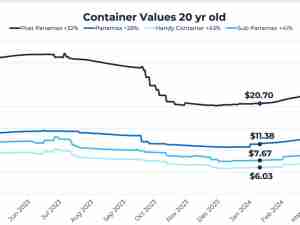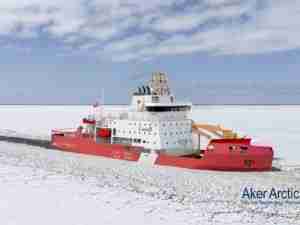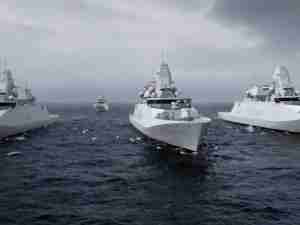Ports of the Western Hemisphere are moving to put the buzzword of 'sustainability' into practice, concentrating on balancing pursuits of economic prosperity, environmental quality and social responsibility.
The port industry's emphasis on sustainability came into clear focus Sept. 30-Oct. at the 96th annual convention of the American Association of Port Authorities, hosted in Norfolk by the Virginia Port Authority.
At the gathering of more than 500 port leaders, representing some 150 seaports from throughout the Americas, AAPA membership unanimously approved a resolution embracing the three-pronged concept of sustainability as a standard business practice for ports and the association.
'It is my hope that this resolution will be supported by the members of all delegations, and that we can then look to the individual ports to support the resolution by implementing their own complimentary sustainability practices,' said outgoing AAPA Chairman Capt. Allen O. Domaas, who was among speakers addressing issues of sustainability during convention sessions.
Domaas, currently President and Chief Executive Officer of the Fraser River Port Authority in British Columbia, looks to take on an increasing role in such practices himself. Early next year he is slated to assume the newly created position of chief sustainability officer of the soon-to-be-announced consolidated Vancouver Fraser Port Authority.
When Domaas began a one-year term as AAPA chairman in September 2006, he made sustainability efforts an association priority, leading to the creation of the AAPA Sustainability Task Force, which developed the just-approved resolution as well as a series of guiding principles to integrate sustainability throughout port activities and planning.
'I believe that it is essential for our membership to look at the sustainability of their port operations in three important areas: Economic, social and environmental,' Domaas said in his chairman's address.
'In my own experience, I have seen a marked shift in local residents' perceptions of what they expect from waterfront development,' he continued. 'Only a few short decades ago, the communities surrounding our ports focused heavily on the aesthetics of our ports and a desire to obtain access to the foreshore, and their tolerance for most port activities was high.
'Now,' he said, 'there is a far greater focus on protecting the environment, maintaining riparian habitat and lessening the impact of port activities on the surrounding communities.
'We have and must continue to adapt to these changing social values,' Domaas went on to say. 'If we are going to maintain support for current and future port and transportation activity, I think it is imperative that we create sustainable infrastructure today that will leave choices for those that follow us in this business and our children.
'To do this, it is incumbent upon us to engage local residents in a more frequent and thorough dialogue on how to create sustainable infrastructure,' he said. 'Through these dialogues, we will recognize and adapt faster to their issues of concern. We can also use these dialogues to educate people about the social, economic and environmental benefits of ports, and encourage them to see and appreciate the relationship that exists between infrastructure development and the affordable and often imported goods that stock the shelves of their homes and businesses.'
During a convention session titled 'Sustainability: An Imperative for the Port and Maritime Industry,' AAPA Sustainability Task Force Chairman Dr. Aston A. Hinds sought to dispel the notion that environmental and social responsibility detract from fiscal achievement.
'What we have learned today is that companies that are socially responsible and good environmental stewards are among the most profitable,' said Hinds, who serves as environmental affairs manager for the Port of Houston Authority. 'There does not have to be a tradeoff.'
Hinds, who holds a doctorate in applie








